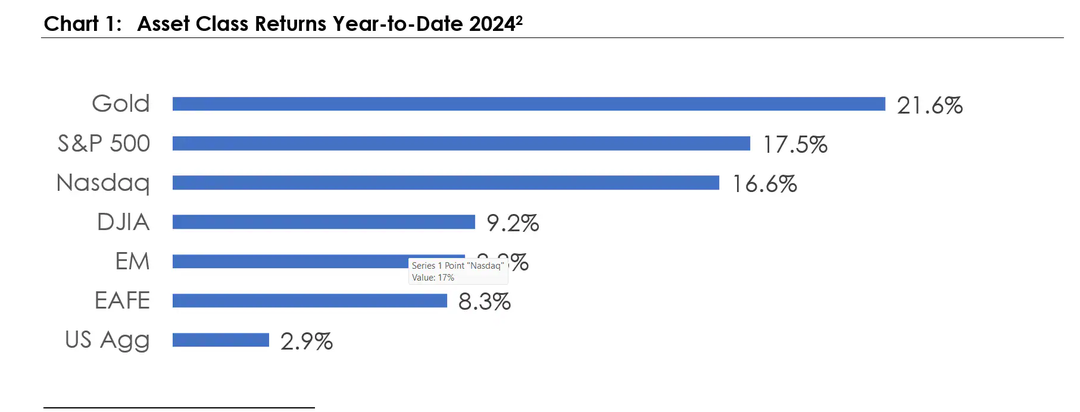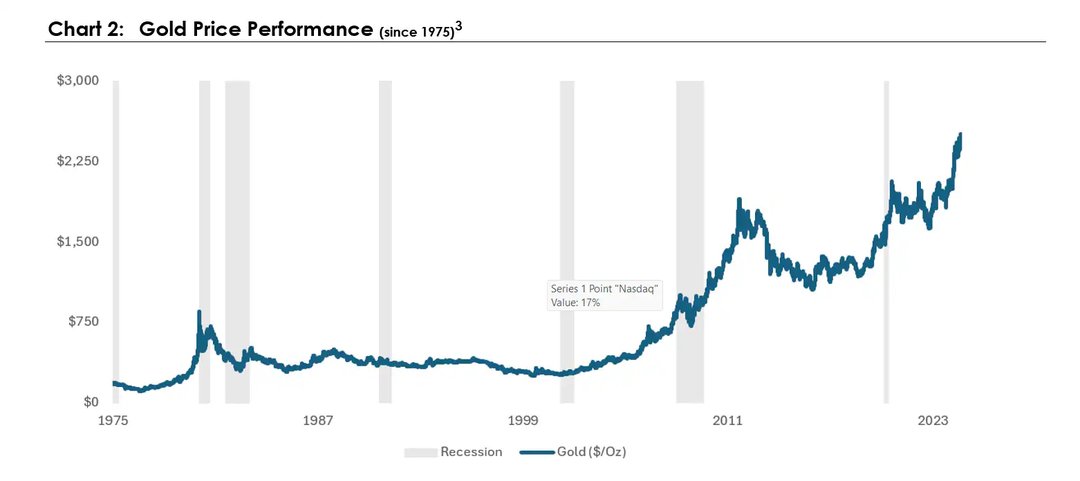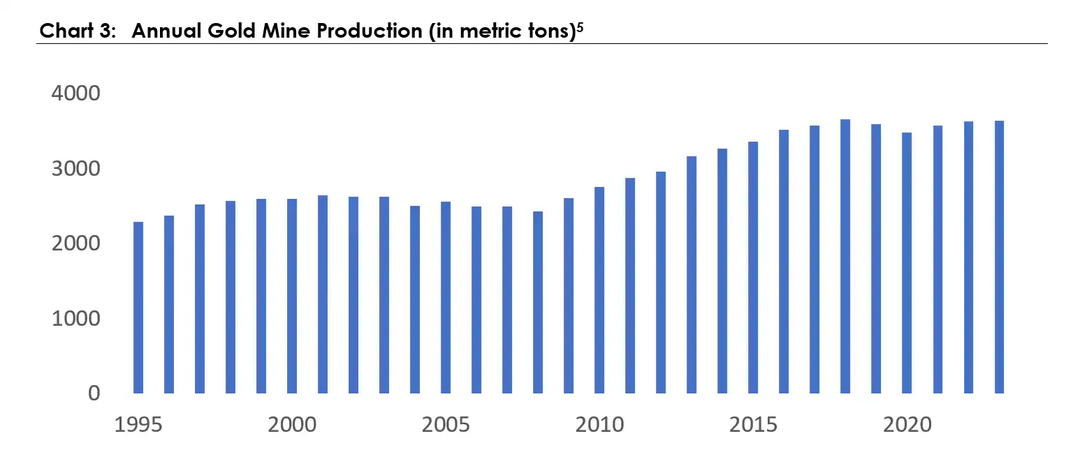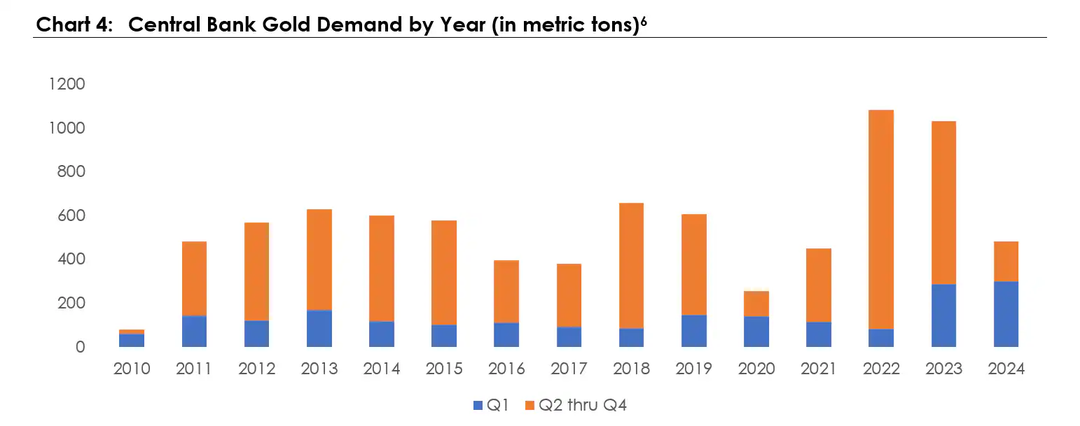By: Daken Vanderburg
Daken Vanderburg is Head of Investments for Wealth Management at MassMutual.

This article will ...
Note gold’s use as a medium of exchange.
Track its market performance over the last few years.
Look at the role central banks play in its market performance.
Let us explore an asset with no cash flows, no clear demonstration of value, very little supply, very little utility, and yet it has occupied and fascinated men and women for thousands of years. And it’s been on a market tear lately: gold.
It is something tangible, objectively desired, and, yet, mostly useless except for the important fact that we humans have agreed to tell each other it is not.
Gold’s use
Imagine for a moment you land on an island. The island has nine people already (you are the 10th), and the island is fairly productive. Someone farms, someone raises cattle, someone else makes thatched roofs, and the like.
As the newest member of the island, you need food and shelter. So, you offer to work for the others in exchange for goods. They agree.
It’s now an economy. But … wait … there’s a problem. How do you get a portion of a cow for two hours of work? Or just one day’s labor of a thatched roof?
The island needs a standard of value — something to trade in place of the actual goods themselves!
- It needs to be distinctive (so everyone can recognize what it is)
- It needs to be standardized (so everyone agrees how much each is worth
- It needs to be of limited supply (so no one can create more suddenly)
- It needs to be portable.
See where I am going here?
This is where gold enters. Now, does it need to be gold? No, absolutely not, but it needs to have those characteristics above, and everyone (or most everyone) needs to agree to use it.
What have you done for me lately?
OK, fine, you say, but why should I care? Well, that brings me to Chart 1, and gold is having a bit of a moment.

As discussed thoroughly, equity markets have had a great 2024 (thus far), and yet gold is up even further.
Additionally, if we look back further (as can be seen in Chart 2), gold performs reasonably well during recessions and can perform well during inflationary time periods. It also has a tendency to do well when there are market shocks as it can be seen as a “safety asset” or a store of value until the dust settles.

And this is where it gets interesting…
What follows is a review of both supply and demand perspectives on gold and, inevitably, a conclusion of its utility. With that, let us dig in…
Jewels, Jokers, and Jerry Cans
Any time we have a good, we want to think about supply and demand. Let’s start with supply.
There are roughly 212,000 tons of gold in the entire world. OK, simple enough … that’s not much.
What’s even more important is that we can’t artificially create it (I’m looking at you diamond industry), so the annual supply increase is somewhere between 1 percent and 2 percent. That number tends to go a bit higher when the price is higher (because there are more incentives to dig for more gold, and the number tends to drop when the price is lower (again, because of incentives).

Chart 3 shows fairly steady production because digging for gold requires a mine, machinery, environmental oversight, and more, making it a prolonged operation and not something that opens (although they can shut down) overnight.
On the demand side, a VERY large portion is owned in the form of jewelry (roughly 45 percent), and roughly 17 percent of the world’s gold is owned by central banks. Jewelry demand is fairly steady and changes at the whims of consumers, whereas the central bank demand can change quickly and with very large impact. Which leads us to Chart 4.
Chart 4 shows total central bank gold demand by year, where each year is broken into the first quarter (the blue) vs. the remaining three quarters (the orange).

What I find interesting is twofold:
- 2022, 2023, and likely 2024 as well have had a very large increase in central bank demand.
- 2024 has had a very strong first quarter of demand (we don’t have second quarter data yet).
To put this into context, each year the world is producing something like 3,000 to 4,000 additional tons of gold and, in the past couple of years, central banks have bought a very large portion of it. Perhaps for another time, but it’s also worth noting that central banks are generally pretty price insensitive (i.e., will keep buying no matter the price).
What, Say You?
All in, that means we have an asset that:
- Market participants have agreed has value.
- Can perform reasonably well during challenging markets such as inflation spikes, recessions, and the like.
- Gets very little new supply each year.
- Has a very powerful buyer that doesn’t care about price.
“Aha! He finally said something useful … so we should buy?!”
Well, no, not exactly. I have very little idea if gold will go up or down and, given the lack of cash flows and difficulty to value, one should certainly tread cautiously. At a minimum, however, it is at least worth understanding the shiny metal and some of the dynamics that cause prices to move. After all, we are students of history, and markets quickly reprimand those who have the arrogance to predict anything … let alone gold prices … with certainty.
_______________________________
2 Source: Bloomberg, WMIT, through Aug. 20, 2024.
3 Source: Bloomberg, through Aug. 20, 2024
4Source: World Gold Council, through June 30, 2024
5 Source: Bloomberg, through Aug. 20, 2024
6 Source: WMIT, World Gold Council, through June 30, 2024
MM202708-310156


